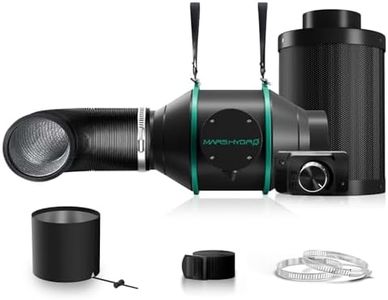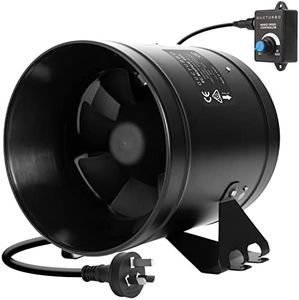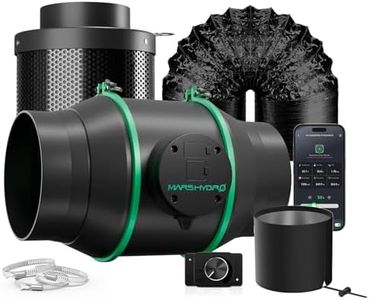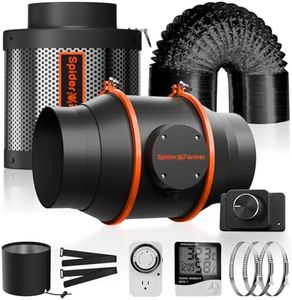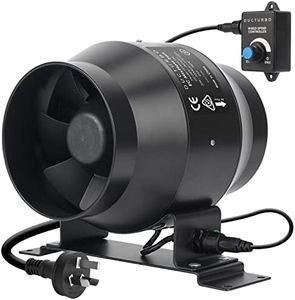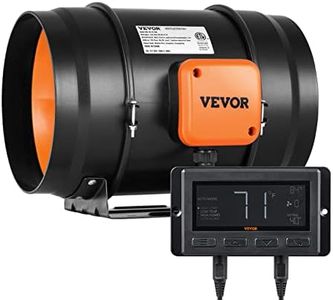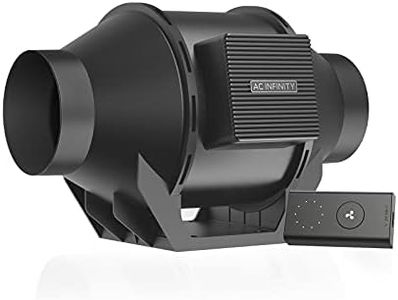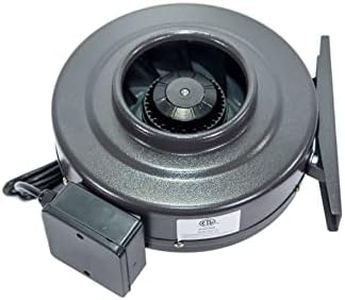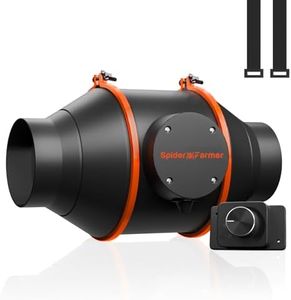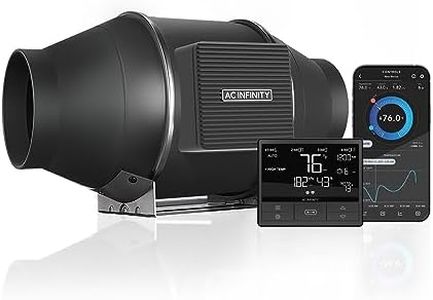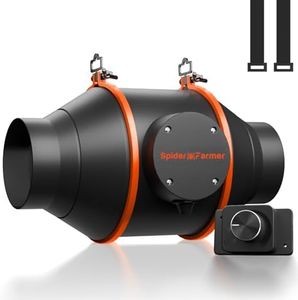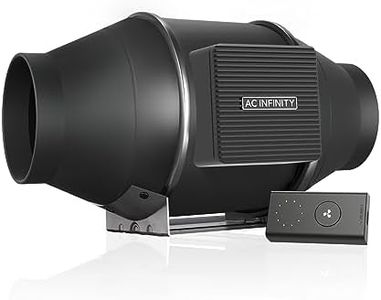We Use CookiesWe use cookies to enhance the security, performance,
functionality and for analytical and promotional activities. By continuing to browse this site you
are agreeing to our privacy policy
10 Best Duct Booster Fans
From leading brands and best sellers available on the web.Buying Guide for the Best Duct Booster Fans
Choosing the right duct booster fan is important for improving airflow in your home or workplace, especially in rooms that always seem hotter or colder than the rest. Duct booster fans help move air through your existing ductwork, making your heating or cooling system more effective. Before you start shopping, think about where you need better airflow and how you'd like to control the fan. Matching the fan's specs to your ductwork and your specific comfort needs will make a big difference in getting good results.Airflow (CFM)CFM stands for Cubic Feet per Minute, and it measures how much air the booster fan can move. This is a critical spec because higher CFM means more airflow through your duct, which can significantly improve comfort in under-served rooms. Boosters range from lower CFM models for small rooms or short duct runs, to high CFM fans needed for large rooms or longer ducts. To pick the right one, consider both the size of the room and the length of the duct—bigger spaces and longer ducts need more CFM. If in doubt, estimate the volume of the room and pick a fan that matches airflow demands.
Fan Size and Duct CompatibilityThe fan's diameter and design should match the size and shape of your existing ducts. Most duct booster fans are built for standard duct sizes—like 4, 6, or 8 inches in diameter. Picking a size that matches your ductwork is important for an easy, air-tight fit and best performance. Measure your ducts before buying, and make sure the fan is made for round or rectangular ducts if that matters in your case. A mismatch can lead to installation headaches and reduced effectiveness.
Noise LevelSome fans are louder than others, and this matters if the fan is near bedrooms, living rooms, or quiet areas. Noise level is typically measured in decibels (dB). Lower dB ratings are quieter, while higher dB fans may be fine in basements or attics. Generally, fans under 45 dB are considered quiet, 45-60 dB is moderate, and anything louder may become noticeable in living spaces. Think about where the duct runs—if people nearby will be bothered by noise, choose a quieter model.
Control TypeDuct booster fans can have different control options: some turn on and off automatically based on temperature or airflow, while others are controlled manually with a switch or timer. Automatic controls are convenient for hard-to-access ducts or when you want consistent comfort without thinking about it. Manual fans can be cheaper and give you more control, but you have to remember to turn them on and off. Pick a control style that fits with your schedule and how often you want to adjust the airflow.
Installation MethodSome fans are designed for simple DIY installation, while others may need professional help. The easier models slip into your duct with basic tools, while larger or more advanced units might require electrical wiring or more extensive duct modifications. If you're comfortable with home improvement projects, a DIY-friendly fan could save you time and hassle. If not, pick a style that's known for easy installation or plan to hire a professional.
Energy EfficiencyEnergy efficiency matters because a booster fan runs for long periods and can impact your utility bills. Some fans have efficient motors that use less electricity for the same amount of airflow. Check for energy ratings or look at motor types—EC (electronically commutated) motors are generally more efficient than standard AC motors. If you care about electricity use or want to minimize long-term costs, look for models known for low energy consumption.
